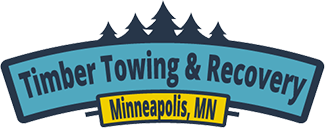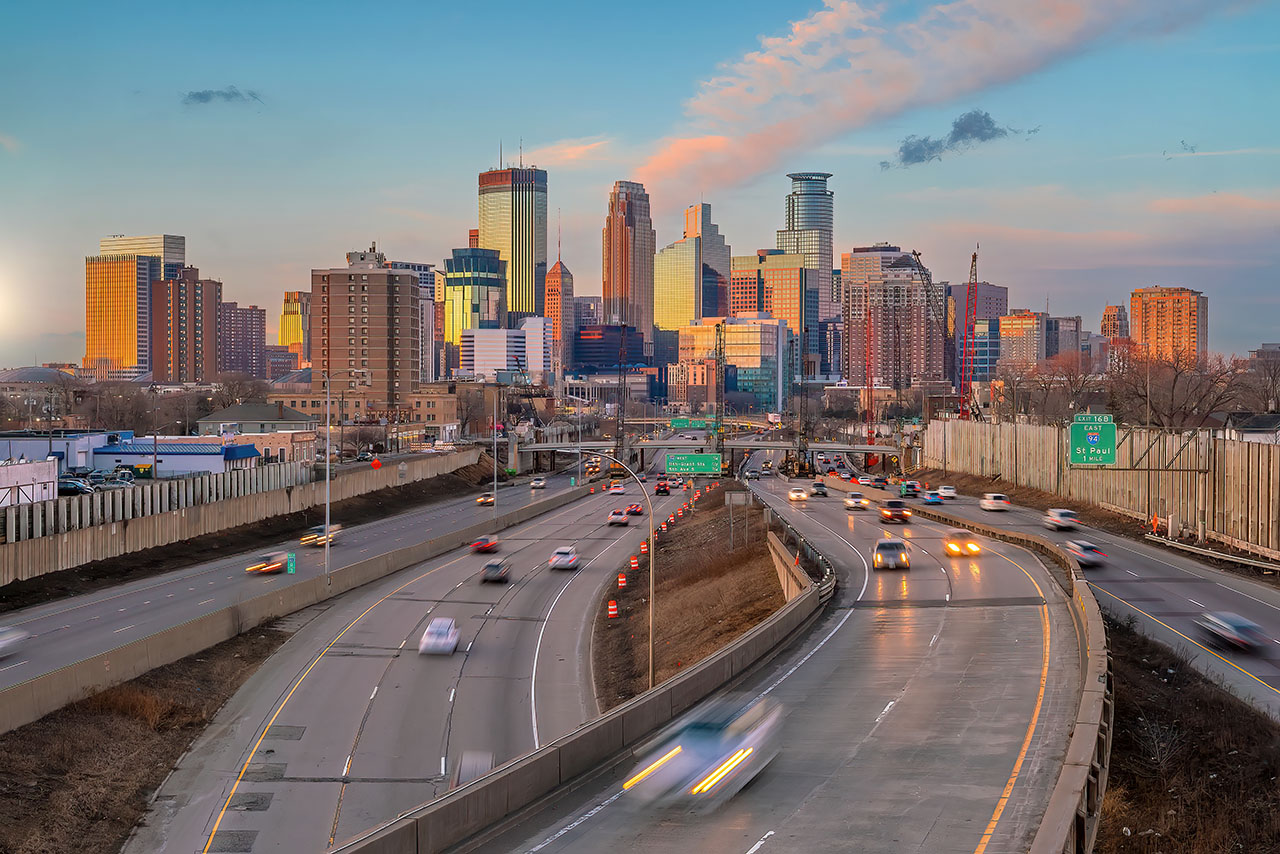Minneapolis, known for its scenic lakes and vibrant culture, is also infamous for its freezing winter time temperatures – and for those that have to live in the city: traffic congestion. As the owner of Timber Towing & Recovery, we live with the challenges that arise from navigating the city’s congested roads on a daily basis, especially during peak hours and harsh winter months.
But what makes driving in Minneapolis traffic so unique, and how does it impact the towing and roadside assistance services we provide?
Read on…
Understanding Minneapolis Traffic
Minneapolis traffic is pretty bad. How bad? Recent studies have shown that drivers in Minneapolis lose an average of 23 hours currently (c. 2023) annually due to traffic congestion. While this might seem manageable compared to cities like Los Angeles, where drivers lose a staggering 120 hours or more, it’s essential to note that Minneapolis hasn’t always enjoyed such “manageable” traffic.
Before the COVID-19 pandemic, the Twin Cities experienced significantly worse road congestion, with traffic congestion costing the average Twin City driver 52 hours and $770 per year.
More specifically, here’s our take on where and why traffic in Minneapolis can be particularly tricky:
- Winter Weather Woes: Minneapolis is known for its harsh winters, with an average of 52 inches of snow each year. Snowstorms and icy conditions can quickly turn roads slippery, leading to slowdowns, accidents, and unexpected road closures.
- Infrastructure and Population Growth: The Twin Cities area has a population of 3.6 million, making it the 16th largest metropolitan area in the U.S. As the population continues to grow, the infrastructure struggles to keep up, leading to congestion. For instance, while cities like Kansas City have more lane miles per capita, Minneapolis lags behind, contributing to slower average speeds during rush hour.
- Major Chokepoints: The I-94 corridor, especially between Snelling Avenue and the Fish Lake Interchange, is notorious for its congestion. This stretch becomes particularly challenging as it’s where three major roads—I-694, I-494, and Highway 524—meet.
- Event Traffic: Downtown Minneapolis is home to both the Minnesota Vikings football team and the Minnesota Twins baseball team. On game days, the influx of fans combined with regular city traffic can lead to significant gridlocks.
- Unique Road Layouts: Minneapolis is known for its beautiful lakes, but the roads that encircle these lakes can be confusing for newcomers. Roads like those around Lake Calhoun and Lake Harriet can become congested, especially during weekends and summer months when residents flock to these areas for recreation.
- Driver Behavior: A study found that Minneapolis and St. Paul drivers rank among the worst in the country. Speeding, a leading factor in accidents, not only poses safety risks but also contributes to traffic jams. Additionally, failure to yield is another common issue, further exacerbating traffic slowdowns.
City’s Efforts: Traffic Calming Projects
To combat these challenges, the Minneapolis City Council has initiated traffic calming projects aimed at making traffic slower and safer. These projects align with the City’s Vision Zero policy, which aims to eliminate deadly and severe accidents on the streets. Some of the traffic calming measures include speed humps, curb extensions, and traffic circles.
In August 2022, the City Council devised a more transparent and equitable approach to traffic calming in neighborhoods, ensuring better resource allocation.
This new process, detailed in the Neighborhood Traffic Calming Report from January 2023, provides residents, business owners, and neighborhood organizations with a platform to request traffic calming measures in their areas.
The City has also set up an interactive map to view all submitted applications and the status of various traffic calming projects.
Implications for Towing & Roadside Assistance in Minneapolis
For local towing businesses like Timber Towing & Recovery, understanding the city’s traffic patterns and the ongoing efforts to improve road safety is crucial. It allows us to strategize our operations, ensuring timely and efficient services, especially during peak hours and adverse weather conditions.
Moreover, with the city’s ongoing traffic calming projects and the potential for roadwork, it’s essential for us to stay updated on road closures, diversions, and other changes. This knowledge ensures that we can reach our customers promptly, even in challenging conditions.
Navigating the Challenges
While the city’s efforts to improve traffic conditions are commendable, as a towing service provider, we must also adapt and innovate. Here are some strategies we’ve adopted at Timber Towing & Recovery:
- Stay Updated: Before heading out, especially during rush hours, check traffic updates to avoid congested areas. The city’s traffic calming request viewer interactive map can provide insights into ongoing roadwork and traffic calming projects.
- Leverage Technology: Use navigation apps that provide real-time traffic updates. The Minnesota 511 app offers up-to-the-minute traffic conditions, including delays, closures, and roadwork.
- Winter Preparedness: Given Minneapolis’s harsh winter conditions, always ensure your vehicle is winter-ready. This includes having winter tires, keeping an emergency kit in your car, and being aware of the city’s snow removal schedules.
Know Who to Call: In case of a breakdown or emergency, it’s crucial to have a reliable towing service on speed dial. With unpredictable weather conditions and the unique road structures in Minneapolis, you never know when you might need assistance.
In Conclusion
Navigating Minneapolis’s roads can be challenging, but with the right strategies and a deep understanding of the city’s traffic patterns, towing and roadside assistance can be seamless.
At Timber Towing & Recovery, we’re committed to providing timely and efficient towing and roadside assistance services to our customers, no matter the challenges. If you ever find yourself in need of towing or roadside assistance in Minneapolis, don’t hesitate to call us at (651) 318 0441. We’re here to help, come rain or snow.




